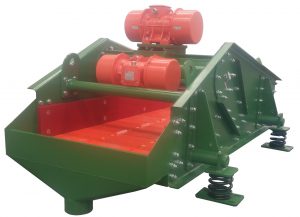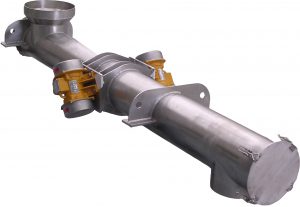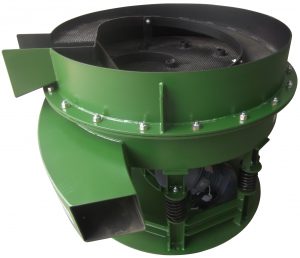Below is a list of the common build materials for vibrating screens and vibrating feeders.
Mild Steel

Mild steel is the most common form of construction material due to its affordability, machinabilty and weldability. It is versatile, easy to manufacture and the end product is neither extremely ductile nor brittle. Mild steel is highly favoured as the main material for vibrating screens and vibrating feeders because of its high strength. One of the main disadvantages of mild steel is that it needs to be coated properly otherwise it will be subject to rust and corrosion. This is due to a lack of alloying elements that are found in stainless steel. But it is this lack of alloying elements that make mild steel more cost effective when compared to other steels.
Stainless Steel

One of the most valuable assets of stainless steel is its excellent corrosion and staining resistance characteristics. Stainless steel is used for industrial equipment where durability and cleanability are paramount. Since stainless steel has no need for surface coatings and does not absorb germs, it is very popular in the food processing industry. Its impressive strength-to-weight ratio allows it to have a high strength even when it’s in a thin state. Modern steel-making techniques allow stainless steel to be cut, formed, machined, welded and fabricated as readily as traditional steels. Probably one of the biggest disadvantages of stainless steel is its high upfront cost compared to other comparable metals, however, given how long it can last, that extra cost is spread out over a longer lifespan making it the more economical choice in the long run. Two of the most commonly used grades of austenitic stainless steels are grades 304 and 316 which we will discuss below.
SS316 VS SS304
The general mechanical properties of these two metals are mostly comparable with the main difference between being their chemical composition, with 304 containing 18% chromium and 8% nickel whilst 316 contains 16% chromium, 10% nickel and 2% molybdenum. The addition of molybdenum is to further increase the corrosion resistance, making it ideal for more acidic or chlorine-exposed environments.304 is more economical and is well suited to applications involving fresh water environments whereas 316 is more suitable for areas with high chloride exposureand marine applications. 316 is more durable, easier to finish and weld and requires lower maintenance than 304.
Bisalloy

Bisalloy is a high tensile and abrasion-resistant quenched and tempered steel plate typically used for structural and wear-resistant applications such as lining. It possesses a high tensile strength of up to 1400MPa and a hardness of 450HB making it extremely tough and durable under high impact loads thus making it the ideal material of choice for applications where it is frequently subject to wear such as conveyors, chutes, dump truck bodies, hoppers, feeders and crushers. Bisalloy can be welded to itself and a range of other steels by conventional techniques. Because of its high hardness, forming and machining bisalloy 450 requires significantly higher forming and bending forces. The use of wear resistant Bisalloy as a build material is common in applications where there is no space for liners or the application is mildly abrasive.
